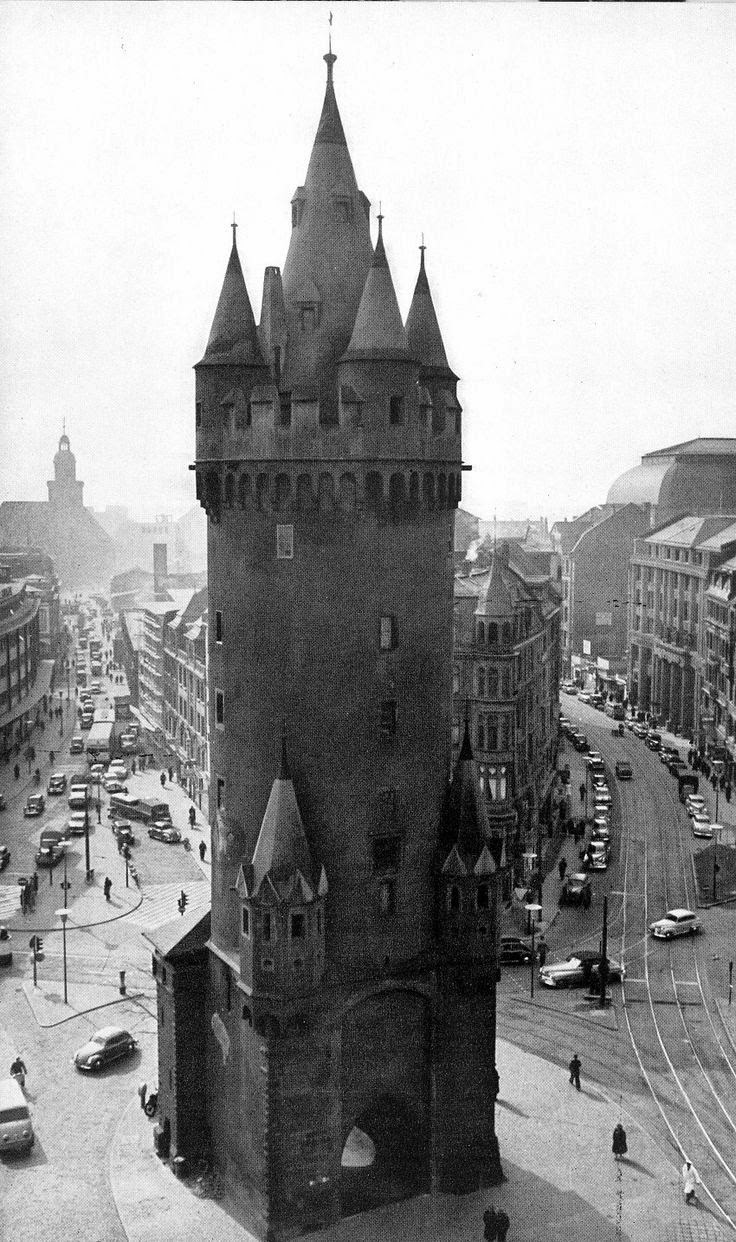EschenheimerTurm (Eschenheim Tower) was a city entryway piece of the late-medieval strongholds of Frankfurt am Main and is a historic point of the city. The tower, which was raised at the start of the fifteenth century, is immediately the most seasoned and most unaltered building in the to a great extent reproduced Frankfurter Neustadt (new town), now otherwise called the Frankfurt-Innenstadt (downtown area).


In the early fourteenth century, the Frankfurter Altstadt (old town) progressively started to extend past its outskirts; documentation from the 1320s of structures raised outside of the city divider vouches for the developing requirement for development. With the consent of Holy Roman Emperor Louis IV, the free royal city started its supposed “second city development,” expanding the surface range of the city triple.

In 1343, just ten years after the station of the Neustadt, the development of the city divider started, likewise sanction by the head, keeping in mind the end goal to secure the Neustadt from the different dangers that undermined the city around then. Separated from a focal road (kick the bucket Zeil), the site of the dairy cattle market and the Roßmarkt, the new town was fundamentally given to enclosures and agribusiness, as opposed to private or business structures.

In spite of the fact that the new strongholds assumed control in excess of 100 years to construct, on 11 October 1349, simply three years after the start of development, the foundation was laid for a door tower at the site of the later EschenheimerTurm, which at the time was basically depicted as “round.” Located at the end of GroßeEschenheimerStraße (an augmentation of the Kornmarkt, the city’s second most imperative north-south hub), the fortress was of the extraordinary key vitality.

EschenheimerTurm is 47 meters high, comprising of eight levels and two upper rooms (see chart, left). On a square base that houses the entryway sits a round tower, which comes full circle in a soak tower named with four, little, just as proportioned side turrets and an anticipating fortification. Adolfsturm, a comparative tower inherent the majestic city of Friedberg in 1347, may have served as a model.

Initially, GroßeEschenheimerStraße headed through the gothic curves of the entryway, transforming into EschenheimerLandstraße once outside the city strongholds (the road now goes around the tower). The entry could be shut with a portcullis; rubble and stones were put away on the first level (straightforwardly over the door), with which the path could be further blockaded in the occasion of an assault. On the second level, behind 2.5 m (8 ft.) thick dividers, were arranged the living quarters of the tower protect, which stayed possessed until 1956. Both sides of the tower showcase crests in help: confronting the city is a silver bird on a red field, the Coat of arms the free supreme city of Frankfurt, and on the inverse side is a dark twofold headed hawk on a brilliant field, the escutcheon of the Holy Roman Empire. On the internal confronting side of the tower is a secured overhang, thoughthe outward-confronting side is flanked by two little towers. The representation in easing over the doorway to the restaurant on the city side of the tower is probably that of the developer, Gerthener.

On top of the tower is an iron climate vane. As indicated by legend, Hans Winkelsee, a poacher who was sentenced to death and was being held in guardianship in the Tower, could shoot the consider nine along with the climate vane with nine gun shots. The city committee is said to have been so awed by the scene that it acquitted Winkelsee. The openings in the climate vane are obviously obvious today. However, it is no more the same.










